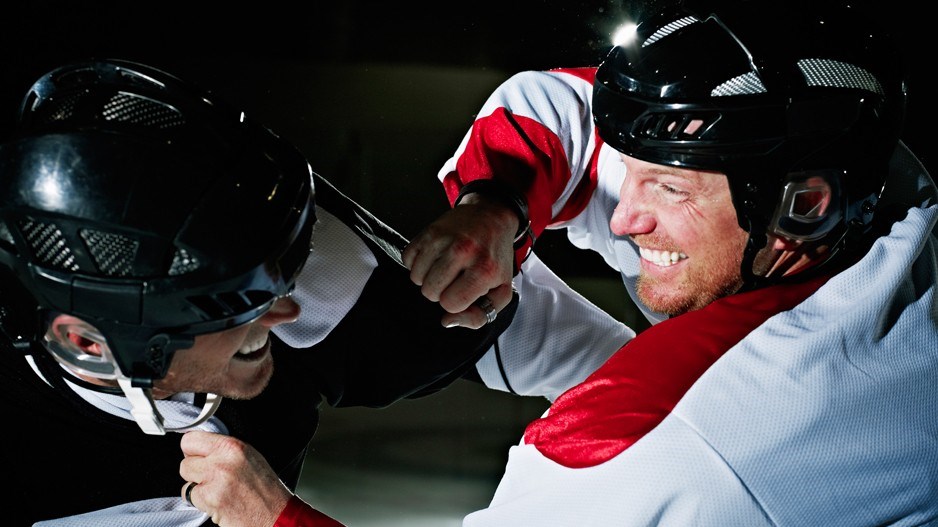Almost a decade has passed since the moment when Canadians were compelled to reflect on how violent the game of hockey could be.
The video of Zdeno Chara of the Boston Bruins shoving Max Pacioretty of the Montreal Canadiens into a stanchion was played endlessly. It went beyond sports highlights shows to open national newscasts. It even led to discussions about whether criminal charges were warranted for an in-game occurrence.
The organizations that oversee hockey reacted differently. Some called for a reduction in body checks at the junior level, while others wanted to end head shots and fighting. A survey I conducted in 2013 for the Rick Hansen Institute saw ample appetite for regulations that would protect players of all ages and skill levels.
The findings were met with derision in the name of “tradition” from a commentator who regularly profited from hockey violence, and with rejection from an amorphous online mob that – not surprisingly – resorted to name-calling. The commentator is no longer a fixture of Saturday night broadcasts and the mobs are preoccupied with other causes.
Research Co. and Glacier Media wanted to take a look at the state of the hockey game, to see if a push for rules that would reduce head injuries is supported by the general public and fans. Right now, 27% of Canadians – and 25% of self-described “true fans” of the game – believe that professional hockey has become a more violent sport over the past five years. There is a significant gender gap on this question, with 54% of men claiming that the game is not more violent now, compared to 33% of women.
In the United States, several advertising campaigns have focused on reminding the public about the dangers of traumatic brain injuries in football players of all ages. A memorable clip featuring Hall of Fame inductee Brett Favre has aired on some Canadian channels.
Since Chara’s hit on Pacioretty, the National Hockey League (NHL) has implemented new protocols for injuries and suspensions. A majority of Canadians (52%) rate the NHL’s efforts in looking after the safety of its players as “very good” or “good,” while 18% consider them “bad” or “very bad” and 30% are undecided. Among self-described “true fans” of hockey, satisfaction with the NHL on this file reaches an impressive 76%.
It may seem difficult to reconcile these findings. Both Canadians and fans feel the NHL is succeeding in making hockey a less violent game, but half of men are not particularly keen on recommending it to their sons and daughters. Even non-hockey fans have been exposed to stories outlining the slow recovery of athletes who have sustained a brain injury after a head shot or a fight.
At this point, Canadians and hockey fans agree on taking steps to end at least one of these sources of frustration and worry. In our survey, 80% of Canadians are in favour of banning head shots in professional hockey – a proportion that rises to 89% among “true fans.”
The situation changes when we are asked to imagine professional hockey without fights. Canadians favour this approach by a two-to-one margin (60% to 29%). Among hockey fans, the idea is more contentious, with 46% supporting a ban on fighting and 49% rejecting it.
Canadians aged 55 and over are more likely to endorse the notion of an NHL where players are not allowed to punch each other (72%) than their counterparts aged 18 to 34 (54%) and aged 35 to 54 (52%). Still, a majority of Canadians in every region do not look at fights as an integral part of the game that should be preserved. Support for this ban is highest in Quebec (69%), followed by Ontario (59%), British Columbia (57%), Saskatchewan and Manitoba (also 57%), Atlantic Canada (55%) and Alberta (51%).
There are doubts about what a ban on fights would mean to hockey, with only 43% of Canadians and 28% of fans assuming it would be beneficial. However, 66% of Canadians and 74% of fans believe the game would be “better off” if head shots are banned from the professional sport. It is evident that a new set of rules, if implemented, would not lead to fans abandoning the game altogether.
Mario Canseco is president of Research Co.
Results are based on an online study conducted from December 15 to December 17, 2021, among 1,000 adults in Canada. The data has been statistically weighted according to Canadian census figures for age, gender and region. The margin of error, which measures sample variability, is plus or minus 3.1 percentage points, 19 times out of 20.




